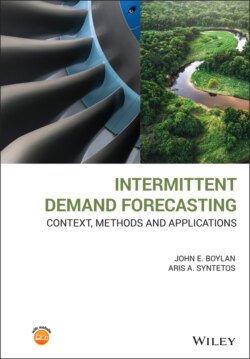Читать книгу Intermittent Demand Forecasting - John E. Boylan - Страница 67
3.3.1 Aggregate Financial Targets
ОглавлениеA financial target can be set in a variety of ways. One way to express it is in terms of the average inventory valuation, obtained by recording the financial value of inventories at a number of times during the year and averaging them. Sufficient times during the year should be included to obtain a reliable average, especially if inventories are seasonal. The exact method of valuation depends on the accounting rules employed; for further discussion see, for example, Muller (2019).
An important issue to be addressed is the ‘write off’ of obsolescent stock if it has no residual value or its ‘write down’ if it still has some value, for example as scrap. Once stock becomes so slow moving that it is unlikely to be ever sold, then these adjustments to the balance sheet are necessary. The record of inventory written off, or written down, is useful in two ways. Firstly, it can be used to assess the additional percentage inventory holding cost to allow for the potential obsolescence of slow moving SKUs, as discussed in Chapter 2. Secondly, the write‐off and write‐down values can be monitored to assess the effectiveness of measures to prevent the build‐up of obsolete inventory.
Inventory turnover is another useful financial measure. It is calculated as the ratio of the cost of goods sold (COGS) to the average inventory valuation. For example, if the annual COGS is £8 million and the average inventory valuation is £2 million, then the inventory turns four times a year. This measure is useful because it takes into account the growth or decline of sales. If COGS rises by 20% but inventory value increases by only 10%, then the inventory turnover will improve. It is possible to benchmark a company's performance on inventory turnover against competitors, but care is needed in drawing conclusions from the comparison. Inventory turnover is strongly influenced by the breadth of products in the stock range. If it is necessary to include slower‐moving stocks, because of contractual obligations, then the inventory turnover will necessarily be lower. If required, inventory turnover can be assessed for categories of SKUs (e.g. by volume of sales) or at the level of an individual SKU. It is most commonly measured at the aggregate level and provides a useful headline figure. It should be monitored over time, so that the effect of any changes in policies or practices can be assessed.
A full financial assessment of the impact of stockouts can be difficult to achieve. If stockouts lead to backorders, then it may be possible to estimate the costs of expediting orders to minimise the delay in satisfying the order. It is more challenging to assess the costs of lost goodwill from clients. For this reason, aggregate financial targets are usually complemented by aggregate service level targets, to which we now turn.
